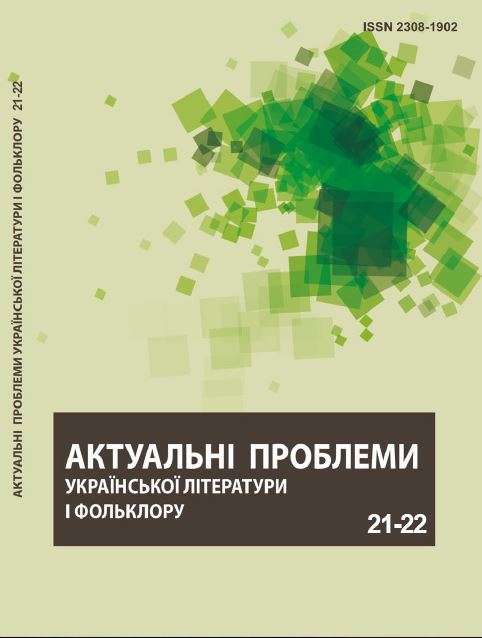The epistolary by V.Stus as a part of display of poet’s personality.
Keywords:
correspondence, epistles, dialogismAbstract
The scientific approaches to the epistolary genre in literature were analyzed and systematized in the article. The correspondence of V. Stus as an integral text, its poetics in terms of contact with different cultural codes and systems was investigated. The original character of artist’s ideological system, the uniqueness of philosophical and aesthetic concepts of interaction between man and the world were revealed in materials of his correspondences. It was proved that correspondences of V. Stus is a significant evidence of evolutionary processes of genre development from the factual presentation to the creation of a massive image of the master of artistic expression. Epistolary by V. Stus is a correspondence by writer who, despite isolation from literary life, was its active participant. In the epistles modified formula of address as correspondence addressed to both his wife and parents, and son, for the letter writer is primarily a form of direct communication, because the methods of making sheet diverse and complex, clarify dialogical nature of Vasyl Stus’s correspondence. It may be distinguished as epistles with high historical consciousness, the poet leaves behind the reference to the destination can be define as, the „group”, the latter tend to form of a diary and essays, particularly innovative writing is emotion, expression, philosophic, which helps play a vital truth. In the process of historical and literary study of the problem a number of issues that require further investigation were identified: determination of the nature and functions epistolary by V. Stus in the literary process of the 60–80th of the twentieth century. It is necessary to disclose axiological and epistemological aspects of the artistic mind of the poet in his correspondence.References
Бахтин М. М. Проблема текста в лингвостилистике, филологии и других гуманитарных науках. Опыт философского анализа / М. М. Бахтин // Эстетика словесного творчества. – М. : Искусство, 1986. – С. 117–340.
Бахтин М. М. Проблемы поэтики Достоевского / М. М. Бахтин. – М. : Советский писатель, 1963. – 470 с.
Бубер М. Два образа веры / Мартин Бубер. – М. : АСТ, 1995. – 590 с.
Гольберг М. Діалог в контексті історії / Марк Гольберг // Дзвін. – 2002. – № 7. – С. 141–145.
Демидов А. Б. Основоположения философской коммуникации и диалога / А. Б. Демидов // Диалог. Карнавал. Хронотоп. – 1995. – № 4. – С. 10– 27.
Коцюбинська М. ,,Зафіксоване й нетлінне”. Роздуми про епістолярну творчість / Михайлина Коцюбинська. – К. : Дух і літера, 2001. – 299 с.
Кузьменко В. Письменницький епістолярій в українському літературному процесі 20–50-х років ХХ ст. / В. Кузьменко // Слово і час. – 1999. – № 2. – С. 57–60.
Паперно И. А. Об изучении поэтики письма / И. А. Паперно // Ученые записки Тартурсского ун-та. – 1977. – Вып. 420. – С. 195–111.
Паперно И. А. Переписка как вид текста. Структура письма / И. А. Паперно // Материалы Всесоюзного симпозиума по вторичным моделирующим системам. – Тарту, 1974. – С. 214–215.
Прохоров Е. Эпистолярная публицистика / Е. Прохоров. – М. : Изд-во Московского ун-та, 1966. – 60 с.
Стус В. Листи до друзів та знайомих // Зібр. тв. у 6 т. (9 кн.) / Василь Стус. – Т. 6. – Львів : Просвіта, 1997. – 412 с.
Успенский Б. А. Семиотика искусства / Б.А. Успенский. – М. : Школа ,,Языки русской культуры”, 1995. – 360 с.
Хализев В. Е. Теория литературы : учебник для студ. вузов / В. Е. Хализев. – М. : Высш. шк., 1999. – 398 с.
Шерех Ю. Кулішеві листи і Куліш у листах / Юрій Шерех // Вибрані листи Пантелеймона Куліша українською мовою писані. – Нью-Йорк-Торонто, 1984. – С. 48–96.

